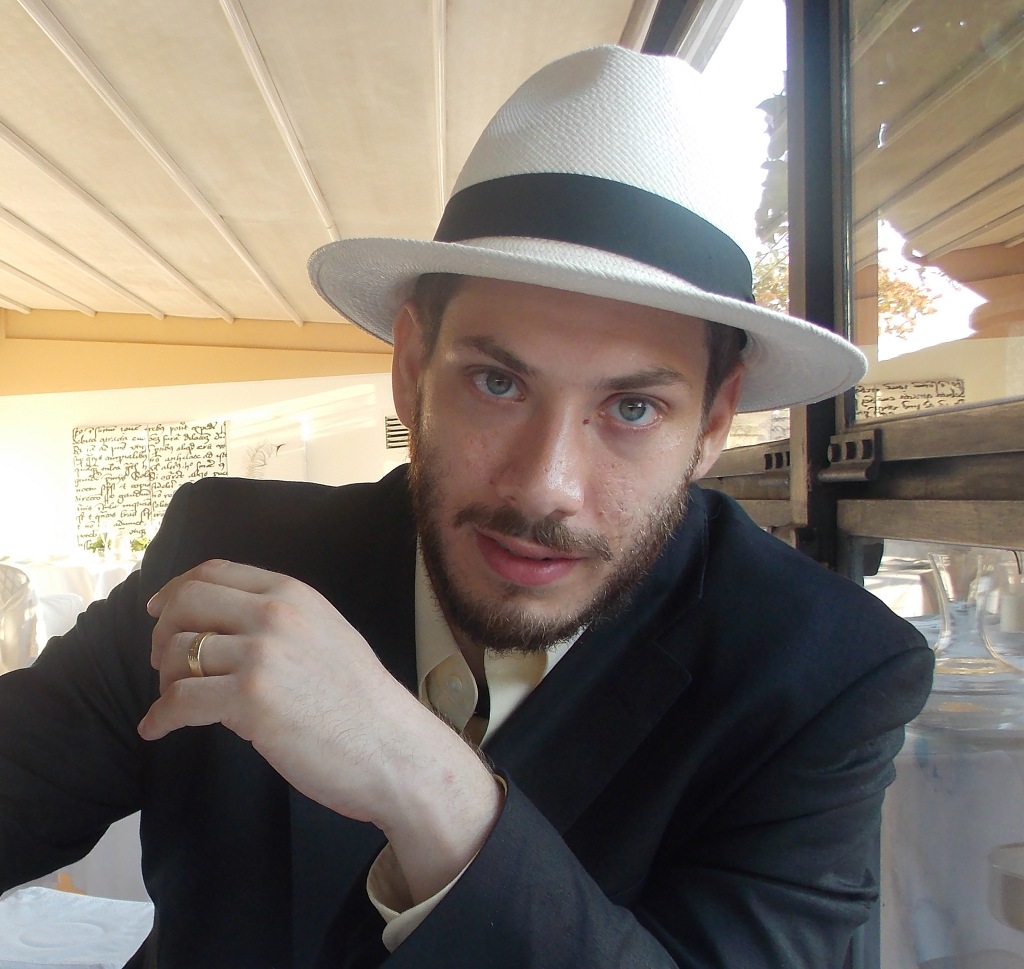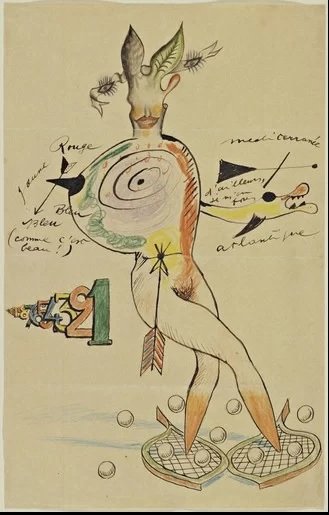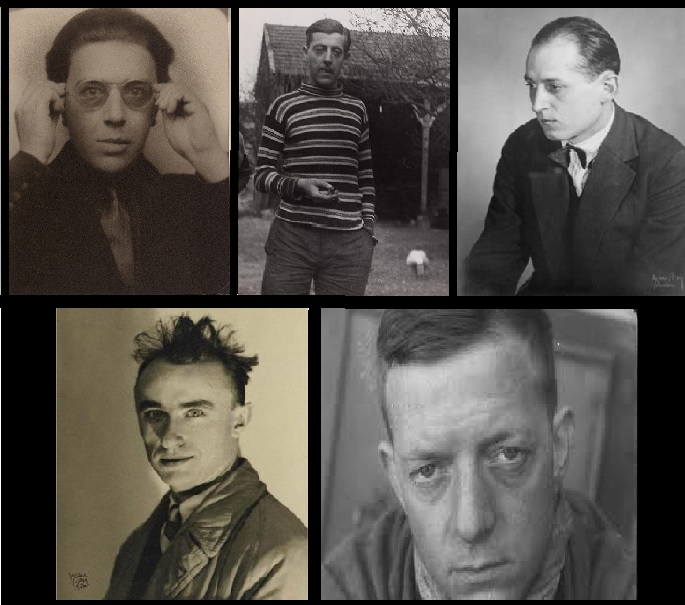“‘With the Exquisite Corpse we had at our disposal – at last – an infallible means of sending the mind’s critical mechanism away on vacation and fully releasing its metaphorical potentialities“
— Andre Breton
NOTE FROM JB: The Parisian avant-garde, notably Dada and Surrealism, are long standing enthusiasms of mine. Occasionally this fascination finds its way into my historical fiction and on those rare occasions when I indulge in making art other than prose, it leans heavily on those two movements. When I discovered author/creator A.A. Rubin’s Cadavre Exquis project, reviving the classic surrealist concept of Cadavre Exquis (French for “Exquisite Corpse”) , I wanted in. It was a delight to be able to participate in an actual Cadavre Exquis exercise, and it is even more of a delight to have A.A. here to talk about the project.
(TL;DR: Check out the results of A.A. Rubin’s contemporary revival of the Cadavre Exquis, a classical Surrealists’ collaborative artistic exercise, here)
Q: Can you explain the concept of Cadavre Exquis and how did you come to fall in love with it?

A: The Cadavre Exquis is a surrealist exercise wherein an artist would fold a piece of paper, like a letter, and draw only in the top section. They would then send the project to another artist who would continue the piece by drawing on the next section, with no knowledge of what the previous artist drew save for the ends of their lines which are visible at the fold. The process would continue until the paper (sometimes multiple papers stuck together) was filled and the piece was complete.
I had learned about the practice a while ago, but was reminded of it during a recent trip to the Metropolitan Museum of Art’s Surrealism Beyond Borders exhibition. The show had an extensive collection of surrealist cadavres, and a large portion of the initial gallery was devoted to the practice. Reading the excellent gallery cards made me think about how the practice might be adapted to writing, which is my main creative medium.

Q: Tell us a little bit about your Cadavre Exquis project and what motivated you to undertake the exercise?
A: When I saw the Surrealism exhibit, I immediately began to think about how it might be adapted to writing. In a way, it reminded me of the old John Gardner collaborative writing exercise where one person begins a story and then passes the story to the next person in the group, and so on, the obvious difference being that in the surrealist cadavre, the second (and subsequent) artists had little-to-no knowledge of what the previous artist has done. The other, less obvious difference is that in the Surrealist exercise, the composition is done in private, where the creator is alone with their subconscious.
I wrote a blog post on my website detailing my encounter with the surrealist at the Met, and put out a call for other writers to undertake it with me as well.
The basic idea was to adapt the Surrealist Cadavre for writers. I came up with the idea to have each writer compose a paragraph continuing from the last line of the previous writer. Writers would only have knowledge of that last line, and would send only their last line to the next writer.
When the surrealists did their cadavres, they mailed their physical drawings to each other. For this project, I decided to use modern technology like email and google docs. Each writer emailed their final line to the next, and pasted their paragraph into a group google doc where the full story was compiled. The writers were instructed not to peek at the google doc with the previous paragraphs until after they had completed their own. This required the writers to be honest to experience the true effect of the exercise, but it is really no different than the original cadavre project, where the surrealists relied on the honor of fellow participants not to unfold the paper and peek at the previous drawing.
Why “Exquisite Corpse?”
The first time the surrealists engaged in an exercise intended, by its collaborative nature, to remove the rational mind from the creative process and liberate the subconscious, it resulted in the sentence “Le cadavre exquis boira le vin nouveau.” (The Exquisite Corpse Shall Drink the New Wine). In time, the Surrealists came to refer to all such verbal or visual exercise as “Exquisite Corpses.”
Q: How were the participants in the project selected?
A: As mentioned above, I put out a call on my website and promoted it on through my social media platforms (Twitter, Instagram, and Facebook). I asked writers for a statement of interest and bio. There ended up being enough interest for three groups. I had originally conceived the project as a prose writing project, but I got some interest from poets as well. We ended up with two prose groups and one poetry group.

I divided the writers into teams randomly, and then selected each team’s “batting order” randomly as well. I also decided to participate in each group myself. I was hoping to experience the exercise from each position, and while I got to be in the middle and at the end, I never got to lead off (and I didn’t adjust the random order in my favor).
Q: What are your thoughts on the completed exercises? Were there any things which surprised you? Any things that precisely met your expectations?
A: I think the exercise went well. People seemed to enjoy participating, and everyone completed their work in a timely manner. I was a bit worried about it becoming unwieldy, but it was surprisingly cohesive, at least in process. I think the pieces came out well, too. The various paragraphs are divergent in style, as one would expect, but there’s still a coherence to them, and they read well.
I am pleasantly surprised by the talented writers who chose to join me for this project. When I put out the call, I did not know who would respond, but, considering this was basically a shot-in-the-dark, it’s amazing to me how many really strong writers chose to join me in this endeavor. I am grateful to them all.
Q: Tell us a little bit about yourself, when you’re not invoking the serious games of the surrealists, and about your past and future writing projects?
A: I write everything from serious literary fiction to comics, formal poetry to science fiction and fantasy and almost everything in between. My first published work was a short story back in 2002, and I’ve been publishing pretty consistently ever since. I’ve had recent pieces in Ahoy Comics, Love Letters to Poe, and Flying Ketchup Press, among others, and I am currently working on two novels as well.
I am a teacher by profession, but I am currently on a childcare leave. I am also an experienced martial artist with a blackbelt-level rank in multiple styles.
You can find out more about me by visiting my flowpage.
Q: Do you have any plans for future surrealist activities?
A: You know, when I first chose my social media moniker, @TheSurrealAri, it was a bit of a joke. At the time, twitter was relatively new, and there were many fake celebrity accounts. “Real” celebrities would often choose handles that began with @TheReal before their name to differentiate themselves from the fake accounts that were taken (and held unless the celeb paid an exorbitant price). I came into that environment and said, I’m not going to be “The Real Ari,” I’m going to be “The Surreal Ari.”
Over time, however, I’ve come to embrace the surreal moniker. The surrealist project, which involves accessing the subconscious mind through art, meshing the real and dream worlds, and a heavy use of symbolism actually meshes with much of what I do pretty well. Some of my recent writing has had a decidedly surrealist bent.
Q: Has your experience with the Cadavre Exquis project catalyzed broader realizations or observations?
A: Only that there is a great value to working on art for art’s sake. Not everything has to be commercial and/or marketable. This was a weird project, one no one got paid for, and one that was definitely unconventional and weird, and yet each of the the writers who participated got something out of it, had fun doing it, and connected with like-minded artists whom they may not have known before. There is a value in the strange and the uncomfortable (a very surrealist thought) and it is fun to try something new. Too often today, art is treated as a business, but there is a value to making art that goes beyond the commercial. Make art; get messy; be weird. You’ll grow in ways you couldn’t possibly have imagined.
Q: How can my readers find the completed Cadavre Exquis pieces from the project?
Q: How can people engage with you on social media?